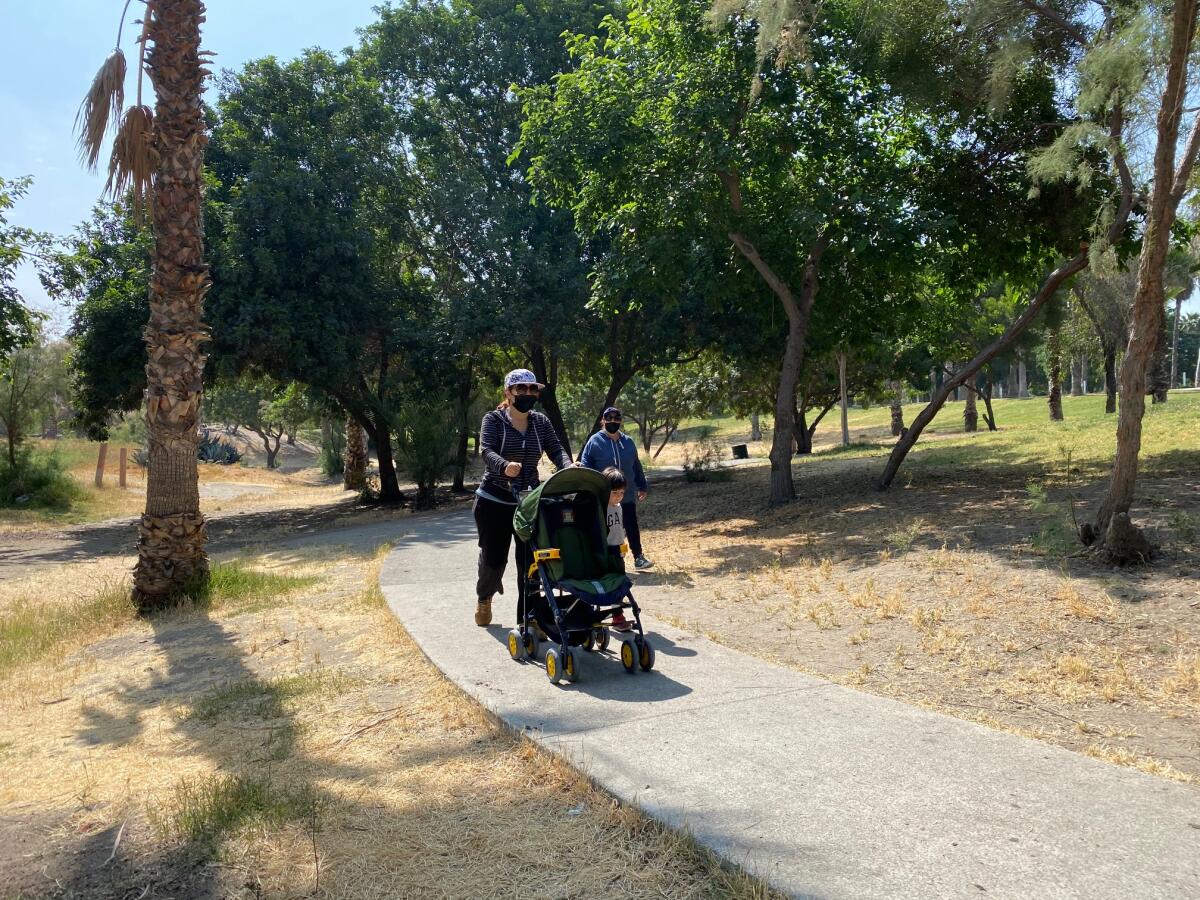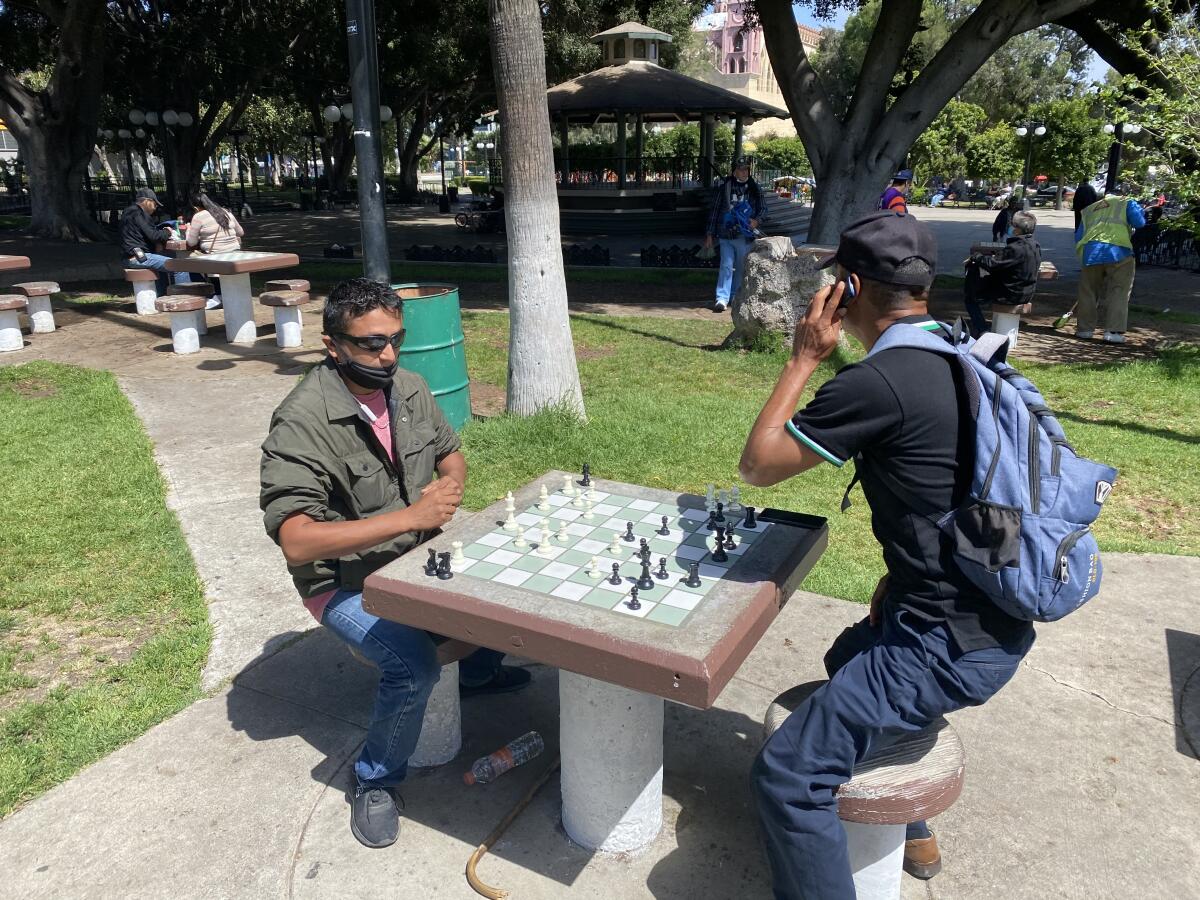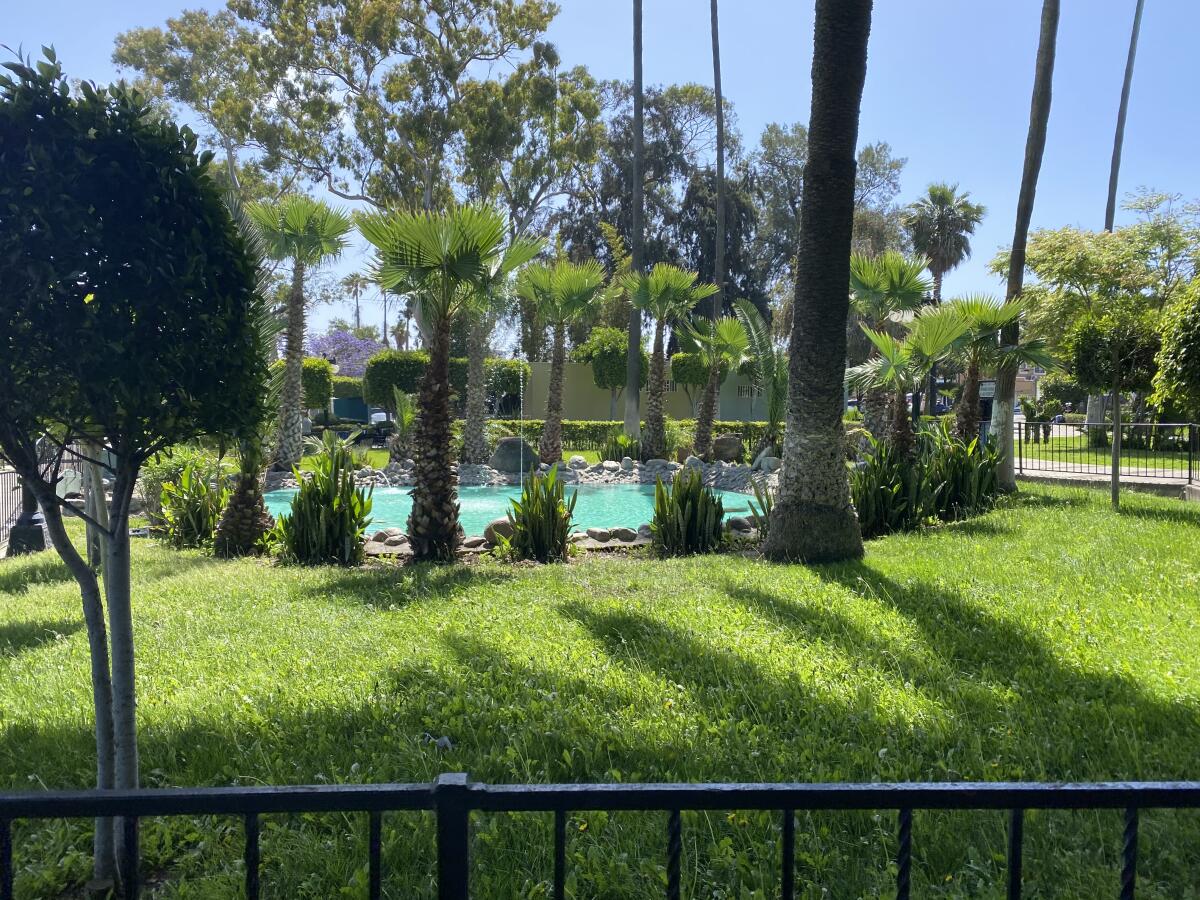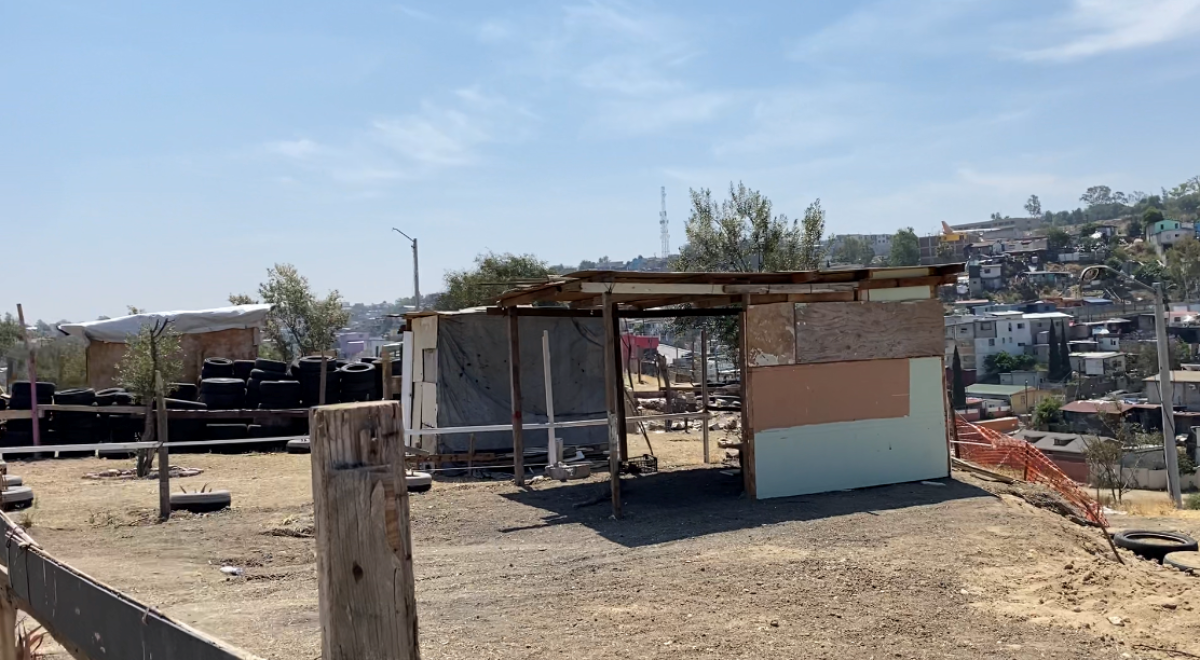A fight over a country club spotlights Tijuana’s shortage of public green space

- Share via
TIJUANA — The question of whether Tijuana has sufficient green spaces was dramatically emphasized when Baja California’s governor vowed to seize one of the border city’s private golf courses.
Baja California Gov. Jaime Bonilla in April proposed converting the Tijuana Country Club and golf course into a public recreational space for children, arguing that the 120-acre property, as one of the city’s few green areas, belongs in the hands of the people.
“With the growth of Tijuana — it’s the most densely populated city in the country — it doesn’t have lungs, and young people in the neighborhoods don’t have anywhere to play. There are no green spaces,” said Bonilla.

Bonilla’s plan has sparked a court fight, and some legal experts are dubious the property seizure will come to fruition. Because he announced the plan just days before the official campaign season kicked off, some wondered whether it was a publicity stunt.
In any case, the proposal highlighted a problem for the rapidly growing city. The total amount of green space is not enough to meet the minimum recommended by the World Health Organization for sustainable, healthy cities, according to Patricia Peterson Villalobos, Tijuana’s secretary of Urban and Environmental Development.
In its report “Health Indicators of Sustainable Cities,” the WHO recommends 9 square meters of green space per resident. Tijuana has only 2 square meters per capita of public recreational area, Peterson Villalobos said, or 4 square meters when considering green spaces maintained by private and public universities and private sports facilities such as those on the Universidad Autónoma de Baja California campus.
According to the investigative newspaper Zeta, Peterson Villalobos has publicly acknowledged that 50% of the city’s parks “still lack maintenance and some equipment.” The city of almost 2 million people has a budget of just 150 million pesos — $7.5 million — to put toward equipment, landscaping and other maintenance for its 209 parks.

Tijuana does have some nice outdoor spaces, though.
Parque Morelos, a 1,045-acre ecological reserve in the central eastern area of the city, features a zoo. On Tuesday morning, Marcela Gonzalez, 44, pushed an empty stroller as her son darted alongside the park’s large lake.
“We come as often as we can to walk the park and get some exercise, and we do enjoy it very much,” she said.
Claudio Ramon Alfaro, 71, said he has been coming to Parque Teniente Guerrero since it reopened after being temporarily closed in the late 1990s due to crime.
“I think they have enough space here in Tijuana. There are a lot of parks and green places if you know the city well,” said Alfaro, who enjoys the musicians that come to play in the middle of the day. “I come here just to relax and take a break and relax my eyes. It’s a very safe and tranquil place, especially since the police put in the cameras.”
But Jesus Aguilera, 31, who was playing chess at tables nearby, lamented the lack of parks.
“There are a lot of people who live in Tijuana, and every single day more and more people are arriving,” he said. “For everyone to have enough room to go to breathe in some fresh air and relax, something has to be done.”
Under the plan of Bonilla and the state government, the exclusive Tijuana Country Club — known locally as Club Campestre Tijuana — and its attached 18-hole golf course would be seized and turned into a 120-acre public park. Bonilla, of the ruling political party Morena, has proposed to convert the exclusive club into a recreational space for children, arguing that it is one of the few green areas in Tijuana that can be redeveloped for that purpose.
The legal battle is underway to expropriate the property, which is in a relatively affluent part of Tijuana.
“There are people who have lived in Tijuana for 40 years, and they don’t know the [Tijuana] Country Club; they can’t even gain access to the parking lot,” Bonilla said.
The club and those supporting it have filed legal complaints against the state’s plan.
A spokesman for Club Campestre said the plan “stinks of political revenge between two politicians.” Other legal experts have said the state is unlikely to win its case in court.
Adolfo Solis, a lawyer for members of the club, said the expropriation would set a dangerous precedent.
“Any opponent, any journalist or any official, any group that is not aligned with the government, could simply have their property removed,” said Solis.
The modern version of the sports and social club opened in 1979; it now features a spa, massage area, salon, and child care, according to its website. The private club has about 800 members, including the city’s business and political elite. (Bonilla contends those are its only members.) To join, one must pay an initiation fee of $70,000 to $90,000, plus monthly fees of $300 to $500, according to Solis.
For months prior to the April 13 publication of the expropriation decree in the government’s official newspaper, Bonilla threatened the action during his daily, live Facebook transmissions. He accused the country club of not paying property taxes and not paying for services such as water.
Club Campestre is a favorite haunt of former Tijuana mayor Arturo González Cruz, who was president of the club for two terms. González Cruz last year was involved in a major political squabble with the governor. Although González Cruz and Bonilla are in the same political party, the two became public enemies, fighting in part over whether González Cruz would be endorsed to run to succeed Bonilla as governor.
Some observers question whether Bonilla’s plan to seize the country club was motivated by that political beef. Business leaders have expressed concern that the expropriation decree will deter private investment and hurt the state’s ability to expand its manufacturing industry.

Some residents argue that the city should take better care of the public properties it already manages.
In the Lomas Taurinas neighborhood of northern Tijuana, many complain they’ve lost access to Parque Pasteje because hundreds of families are building a squatters’ settlement there. Marcelo Alvarez, 34, is among those building private residential structures — shacks made out of spare wood, sheet metal and other discarded materials — inside the park. He and his neighbors decided to build homes there because they had run out of options and did not want to live on the streets, he said.
“Look at us — do we look like people who are sitting around waiting for the government to do something for us?” Alvarez asked, as he drove a spade into the ground to create a foot-wide hole for drainage outside the 4-by-4-foot shack he had made from discarded plywood. “Mexicans don’t have the luxury of sitting around with our arms crossed waiting for the government to send us a check or rent relief. It’ll never come.”
Alvarez said he supports Bonilla’s decision to try to seize Club Campestre.
“For hundreds of years, our government has done nothing but take from the people,” said Alvarez. “At least he’s trying to give us something back.”
Tijuana City Councilman Arnulfo Guerrero León has proposed an alternate solution to seizing private lands. His proposal to buy 100 acres in the southern portion of the city — off Boulevard 2000, near Cuero de Venados — and construct a man-made forest is being considered by the planning commission.
“Tijuana requires a forest, a sufficiently large and open space that includes protected natural areas, green areas, wildlife, vegetation and natural landscapes for the preservation of regional ecosystems, which also contributes to the health and well-being of the city’s inhabitants by preventing diseases associated with environmental pollution,” he said.
Fry writes for the San Diego Union-Tribune.
More to Read
Sign up for Essential California
The most important California stories and recommendations in your inbox every morning.
You may occasionally receive promotional content from the Los Angeles Times.











